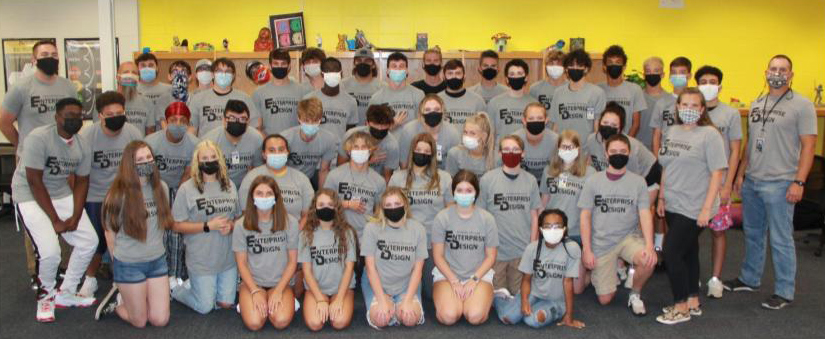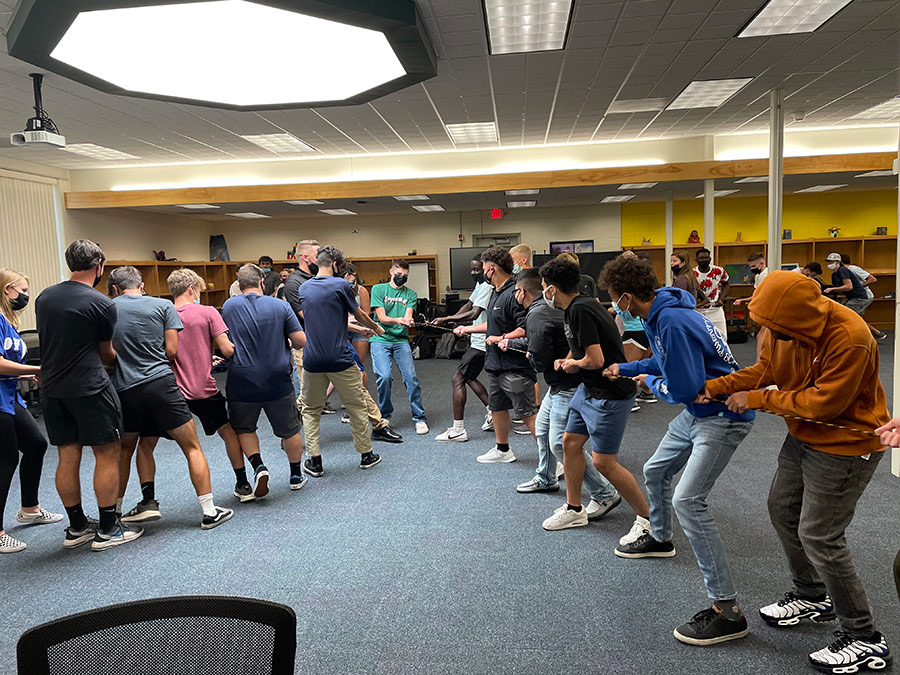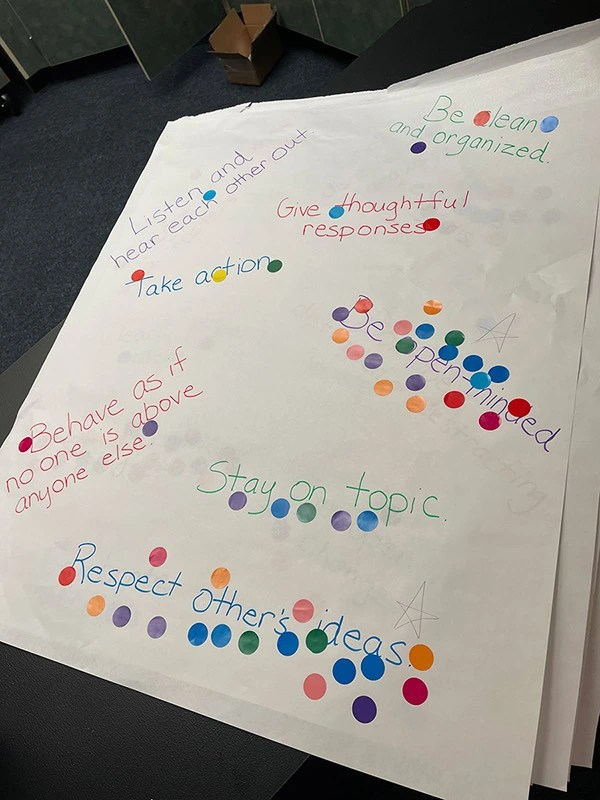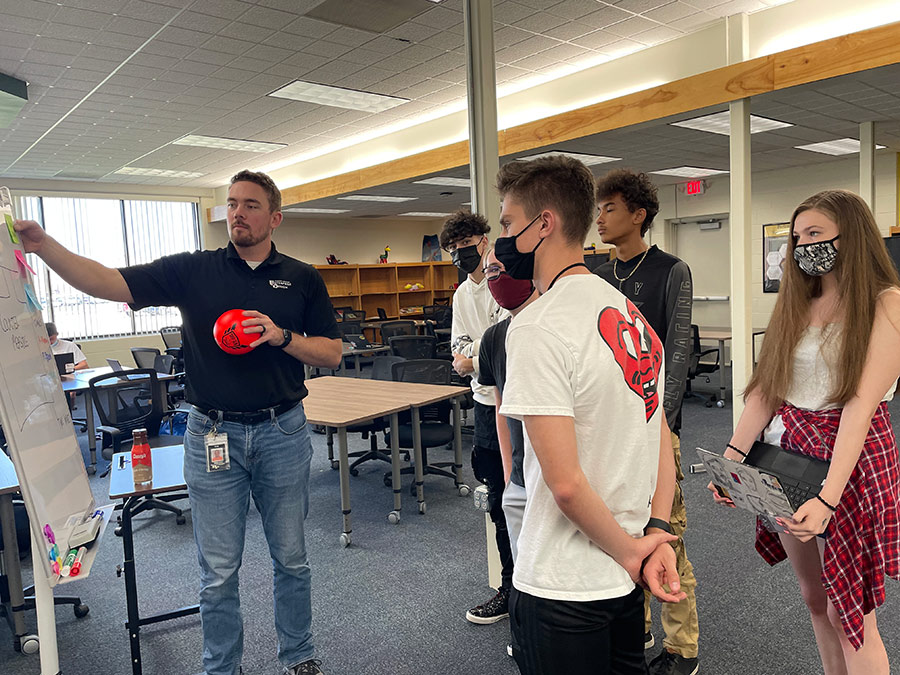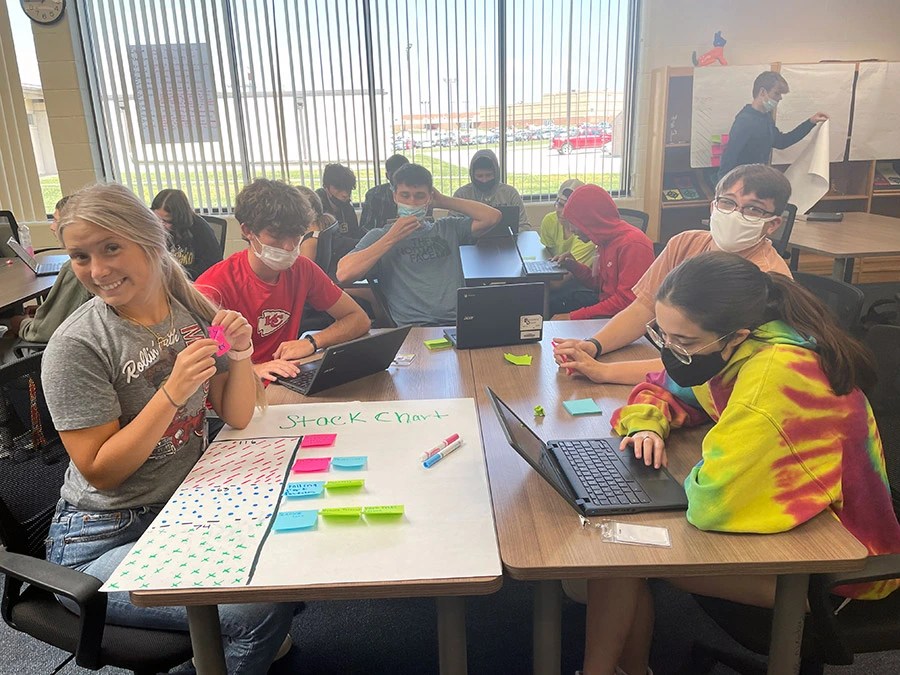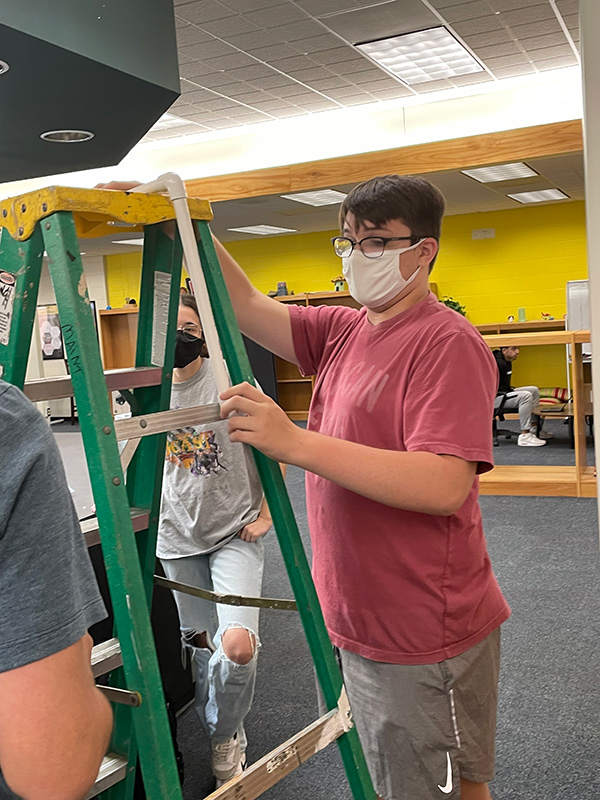Ray-Pec’s 5 lessons for launching a microschool
For the 2021 fall semester, the Raymore-Peculiar School District launched its Enterprise & Design microschool. Using Iowa BIG as inspiration, the half-day high school program provides students with hands-on and collaborative learning opportunities while earning course credit in English, science, social studies and/or business.
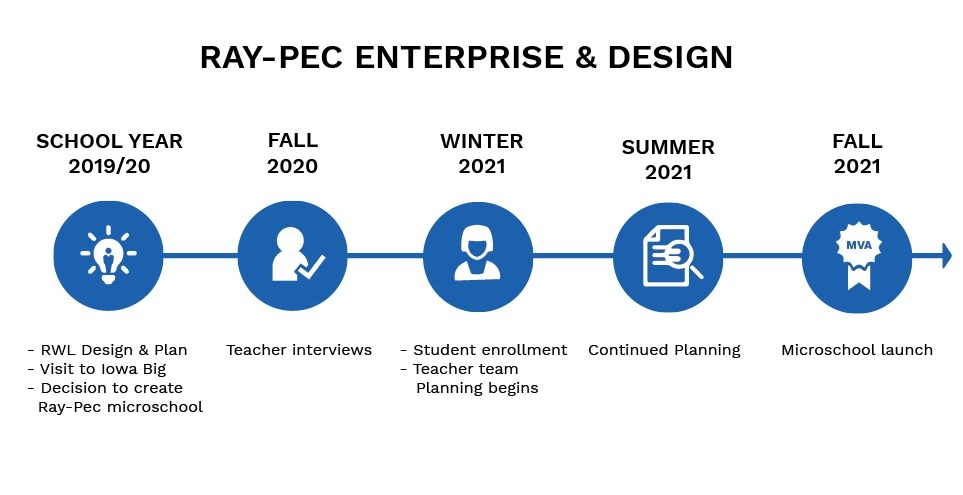
The first three months have been a rocky start, which they anticipated since starting a new program can be challenging. But they are learning from their mistakes and making changes. Here are some of the key lessons they’ve learned so far.
Key Components
- Curriculum: Teachers worked with instructional coaches to determine standards/targets for the courses.
- Client-connected Projects (CCPs): All students are working on two client-connected projects that are resume worthy.
- Essential Skills: Students also engage in activities that help them develop skills highlighted in the Portrait of a Ray-Pec Graduate.
- Competency-based Learning: Students show mastery on content-based targets and skills-based targets.
- Take some time to teach students empathy. Empathy is not a skill that comes naturally to most high schoolers but is needed as they work with clients and how it relates to their projects. It is difficult for them to “get in the heads” of their clients. Empathy maps have helped the Ray-Pec team document what clients think, feel, say, and do.
- A strong foundation is essential. It is necessary to spend several weeks at the beginning of the year working on team building and teaching “design thinking.” Doing a practice project before rolling out actual projects helps set an essential foundation. In addition, it is important to establish a shared vision of outcomes, cultural norms, expectations of students and staff, and roles for each member of the team to avoid issues in the future.
- Give students time to adjust. Ray-Pec Enterprise & Design students were distrustful initially, thinking teachers would revert to traditional teaching and were hesitant to “buy-in.” It took several weeks for them to understand the Real World Learning concepts, but now they’re fully embracing the opportunities and are enjoying the hands-on learning.
- Students will need help with project ideas. The first round of projects was easy, but coming up with topics for the second round and beyond is difficult. When students move to passion projects, that will present an additional challenge. Adults can help by making connections in the community with business and nonprofit organizations to give students more options and keeping running lists of ideas for brainstorming.
- Develop time and project management routines. Time and project management routines help students focus and result in greater self-advocacy and initiative. Ray-Pec Enterprise & Design students now start with daily group and personal goals. A project grid provides each team with important guidelines and a framework to advance their work while allowing students some flexibility and autonomy.
Currently, Ray-Pec Enterprise & Design is considered a “petri dish.” They hope their experiment will inform and inspire more client-based projects and interdisciplinary learning in the district’s more traditional high school spaces. A recent comment from a parent has helped solidify that they are headed in the right direction, “My son is in E&D, and he loves the experience, and it’s the only thing keeping him engaged in school. He comes home every day excited about what he has done in E&D.”
Check out some photos from Ray-Pec’s Enterprise & Design microschool
